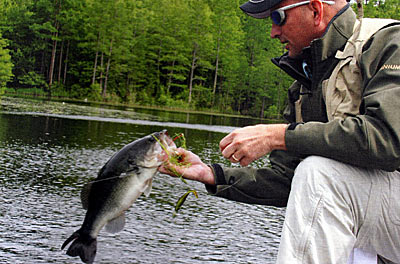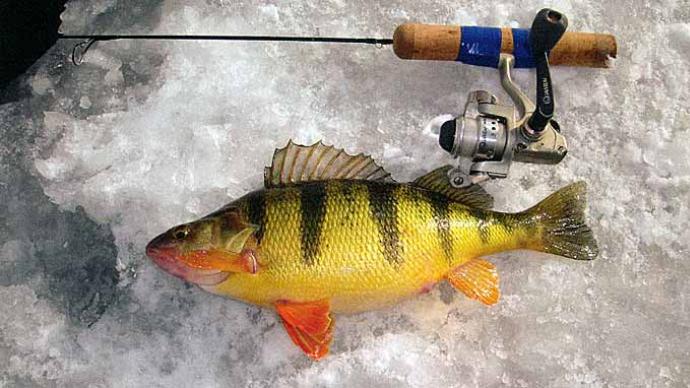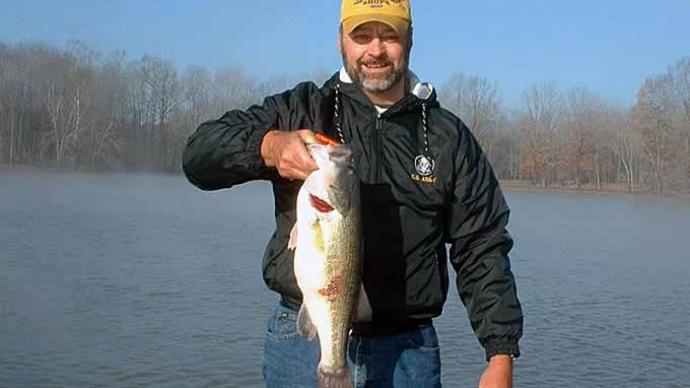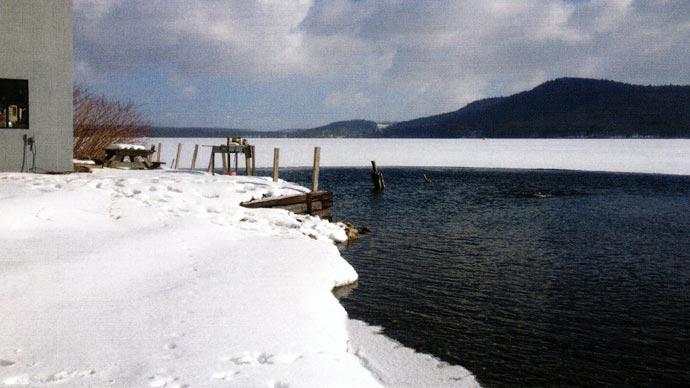
With winter all around us, it is time to look at some elements of fisheries management that occur when the water is cold. Almost all fish species are cold-blooded, and that means their metabolism and activities slow with the drop to winter temperatures. There are, however, still important things going on under the wintertime cold water that impact your fishery.
Early on, scientists started examining how winter temperatures impacted fish and their behaviors, especially in the areas of food consumption and predation. As early as 1945, James W. Moffett and Burton P. Hunt examined the interaction between bluegill and yellow perch in their article titled Winter Feeding Habits of Bluegills. Lepomis Macrochirus Rafinesque, and Yellow Perch, Perca Flavescens (Mitchell), in Cedar Lake, Washtenaw County, Michigan published in Transactions of the American Fisheries Society, 73:1. 231-242 (1945). The researchers found that bluegill consumed very little food during winter. The average stomach contained small amounts of various planktons. Their diet was predominantly aquatic insects (mayfly nymphs) in early winter, until that food source was no longer available, which then changed to planktons (mostly Cladocera) in mid-winter, and tended again toward aquatic insects as they reappeared with initial spring warming. One interesting note for pond owners who feed pellets was the correlation noted between winter warm spells and an increased rate of food consumption for bluegill. Many on the Pond Boss Forum have reported the same, and reveal that they feed in limited amounts during winter's warm snaps. A little extra food during the cold of winter can go a long way toward increasing survival and condition. This study also revealed yellow perch were more active and ate much more food (they are a cool water fish species) than did bluegill during winter. Amazingly, those cool water yellow perch were eating small, cold, and slow-moving bluegill, which accounted for 60% of their diet. During some warm periods, yellow perch consumed seed shrimp (Ostracoda) in great numbers. An important management point for our northern readers is the author's observation that winter predation by perch on young bluegills certainly was an important factor in regulating the bluegill population.
Some 53 cold winter years later, Daniel E. Shoup and David H. Wahl examined Largemouth bass and bluegill winter survival, feeding, and growth in The Effect of Largemouth Bass Predation on Overwinter Survival of Two Size-Classes of Age-0 Bluegills in Transactions of the American Fisheries Society. 137:4. 1063-1071 (2008). This study examined winter predation on two sizes of small bluegill by two sizes of Largemouth bass in small Illinois ponds. This study was the first quantification of predation effects on overwinter survival of young bluegill by Largemouth bass. Predation accounted for a 16-49% increase in mortality above that occurring in predator-free ponds, confirming that predation could cause significant overwinter mortality of bluegill populations. In this study, both bluegill length-classes showed increased length, weight, and condition in the presence of Largemouth bass. So, the bluegills were able to eat enough to meet energy demands (over winter) and still grow. The small size-class of Largemouth bass showed no change in total length or condition during the experiment. The large size-class of Largemouth bass was significantly longer (growth over winter) and had a greater condition than the small size-class at the end of the experiment. Conventional wisdom was that overwinter mortality is primarily caused by starvation. These two studies demonstrated that predator fish continue to feed during winter and also contribute to overwinter mortality of their prey populations.

In examining fisheries population management, we should keep in mind the concept of total mortalities. We all know that many more fish are hatched than can be supported by the pond. Very high percentages must be eaten, die. or be harvested in order to keep the rest healthy. For many species like bluegill. yellow perch, and Largemouth bass, first-year overwinter mortality is critical to year-class size and condition. Many factors can contribute to overwinter mortality. Reduced survival during winter has been attributed to low food availability or consumption (starvation), metabolic-digestive inefficiencies, reduced swimming ability (lipid imbalance due to cold), osmotic stress, and increased vulnerability to disease due to stress as well as predation. Overwinter mortality of young fish is often size specific, affecting smaller individuals to a greater extent than larger individuals, presumably because larger individuals have greater energy reserves and lower mass to metabolic rates.
Studies show for most species, that the colder the climate, the higher the winter mortality on young fish. I can't stress enough the differences in winter mortality between a cold north and a warm south. It makes a huge difference in what to expect, as well as management applications. For example, many more fish die due to cold-induced starvation in northern ponds than in warm southern ponds. However mortalities may increase in warm southern ponds where activity levels remain high, and food consumption depletion plus predation stress remains nearer its higher summer/fall levels. Either way. there are increased winter mortalities of small fish. There is no doubt that local adaptation over time offsets both of these results somewhat.
Studies of bluegill and other fishes indicate that size-specific interactions are important during winter. Winter food availability is often low, making the buildup of energy reserves before winter important. However, chasing down and accumulating those reserves often comes at the cost of reduced growth and an increased risk of size specific predation. Early spawning should allow newly hatched fish to attain a large size and accumulate energy reserves for winter. However, if the fish are born at a time when there is limited food available, many starve early. Thus, trade-offs related to food availability and competition pressure exist and have consequences. Size-specific predation risk affects a host of other interactions, including changes in habitat, diet, and ultimately competition among both different size-classes and species for food resources. Year class size and mortality rates are very complex and result in outcomes that are exhibited differently in different waters. These studies show complex interactions, but critical factors for winter survival are abundant energy reserves and enough size to reduce predation risk.
Understanding the basics of the food web (chain) and its impacts on fish through the seasons is important. While we are out observing and understanding the food web more frequently in spring, summer, and fall, don't discount the impact of cold water in winter. Pond life is, after all, a giant puzzle with moving parts—each season affecting changes in the remaining parts. The more you understand the seasonal effect, the easier it is to work the puzzle.
Reprinted with permission from Pond Boss Magazine



